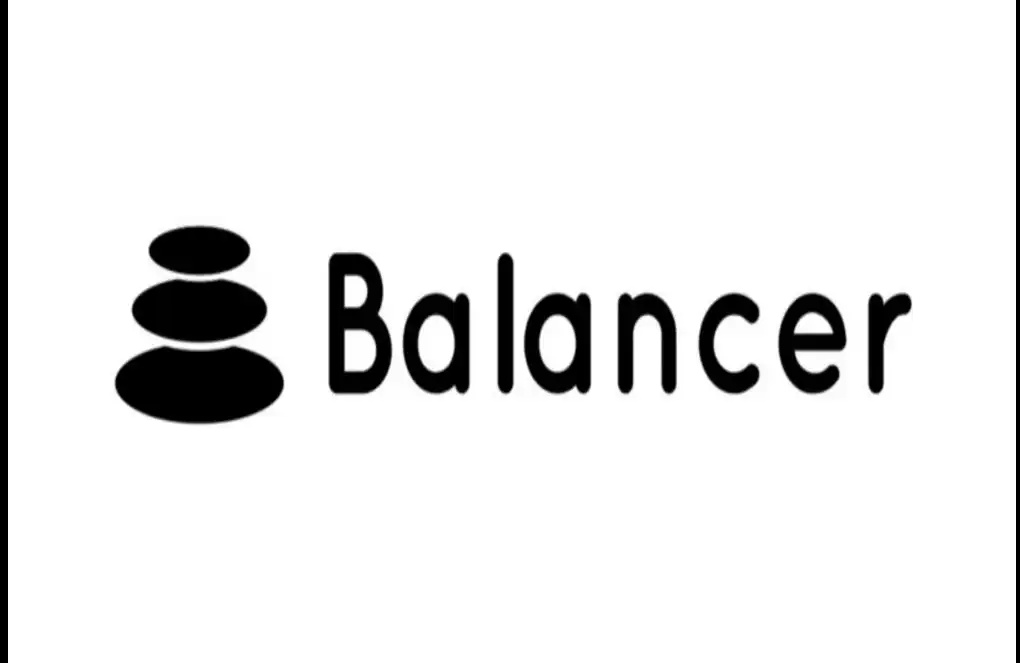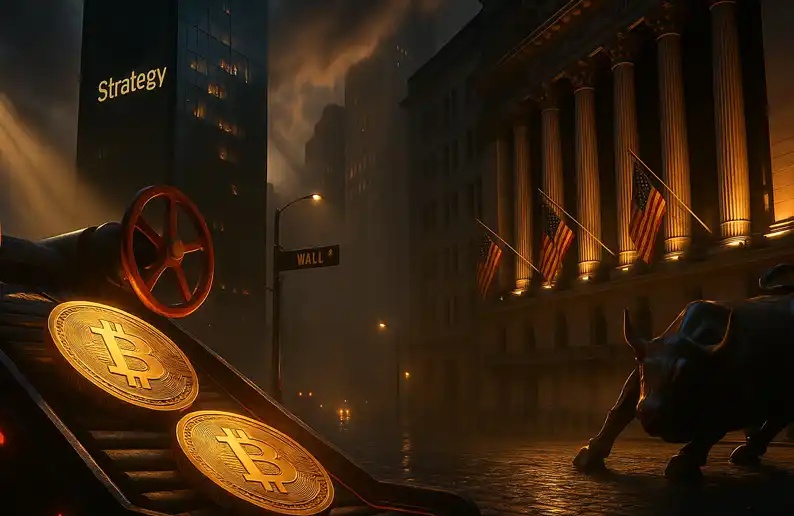Dialogue with Circle CEO: Recovery, reflection and outlook after the crisis
Host: David, Ryan, Bankless
嘉宾: Jeremy Allaire,Circle CEO
Compiled by Kxp, BlockBeats
3 月 11 日,受硅谷银行破产等因素影响,稳定币 USDC 发行商 Circle 面临严重挤兑,USDC 出现持续性脱锚,Circle 迎来其成立以来的最大危机。随后美国多方联手救市,稳住了投资者信心的同时也拯救了已处悬崖边缘的 USDC 和 Circle。危机过后,Bankless 第一时间采访了 Circle CEO Jeremy Allaire,后者对整个危机进行了复盘,并展望危机后 Circle 的发展策略以及监管政策的未来走向。 BlockBeats 对此次访谈梳理翻译如下:
Ryan Sean Adams: We're proud to have Jeremy Allaire, CEO and founder of Circle, with us today. Jeremy, we know you're very busy, so thank you for taking the time to share the latest news with the Crypto community. Are you feeling OK after last week's stressful weekend? Is there anything you want to share with us?
Jeremy Allaire:
It's been a very dramatic time indeed, and not just in the last week. It all started with the failure of Silvergate, a bank that, as you know, many digital asset companies, Crypto companies, and others did business with. There has been discussion for some time about the de-risking of banks and the impact of the banking system on Crypto. This topic has been in the spotlight since the beginning of the year, and now we have some seemingly sudden systemic financial stability problems that raise questions about whether regulators are failing in this regard.
Last week, we started with the closure of Silvergate and had to deal with a lot of companies and challenges. Then on Wednesday, Silicon Valley banks suddenly saw large withdrawals and needed emergency funds. At that moment, many panicked and questioned whether there was a broader risk in US commercial banks, especially mid-sized ones. Then panic set in and several banks closed. So the Federal Reserve stepped in and provided $700 billion in liquidity to the commercial banking sector to insure all uninsured deposits against losses.
In fact, the risk stems mainly from the imbalance in asset and liability management, which is caused by rising interest rates. The liquidity squeeze on banks' holdings of long-term bonds is undermining financial stability, a phenomenon that came into focus on Wednesday.
I can give you a brief overview of how USDC works. When we launched USDC five years ago, we wanted to have a regulated system, approved by payment and banking regulators, and connected to the banking system. The point is that we want to create and exchange dollar digital currencies that are connected to the banking system in a seamless way. At the time, the U.S. regulatory framework was the Stored-Value Electronic Money Act, which covered PayPal, Venmo, Cash App, Apple Pay, and every payment processor you used, all of which were covered by non-bank payment systems.
This is a good system because the law requires you to keep a one-to-one payout ratio. Also, the law says you can only hold a limited set of financial instruments. If you go beyond that, you will lose your license, bank account, etc. We also want more transparency because people are concerned about the risk of Crypto. So we started a monthly asset review conducted by a public accounting firm to confirm the amount of money and tokens.
Initially, only Silvergate bank was able to perform this operation. In large part, the creation of the USDC set the stage for Silvergate's growth. Users who need USDC digital dollar liquidity through their platform can do so 24/7. Over the past few years, our goal has been to increase transparency and reserve quality. We believe that the dollar base layer on the Internet should be government bonds, which means cash at the Federal Reserve and Treasury bills, which are essentially digital cash.
From a technical and regulatory point of view, Circle couldn't get there initially, but we've been getting there. We expanded the number of banks that can hold reserves and process USDC transactions. In the last six months, we've had two major breakthroughs:
First, we moved 80 per cent of our reserves into short-term Treasury bills and partnered with BlackRock, the world's largest asset manager, to create the Circle Reserve Fund. The Reserve Fund, registered and regulated by the SEC, is a government monetary fund established solely for the benefit of USDC holders. It is completely transparent, allowing anyone to view Treasury portfolios, maturities and other details.
Second, the remaining 20 per cent of reserves will be deposited with commercial banks. By working with rated, listed financial institutions, Circle aims to minimize commercial banking risk and ensure optimal quality. Our long-term goal is to deposit more and more of our funds in the largest custodian of cash in the world.
We started working with the first bank in the United States, BNY Mellon, founded by Alexander Hamilton, and they held $24 trillion in assets. In order to become the most robust dollar cash infrastructure in the world, we began transferring cash into the Bank of New York Mellon last week. We started transferring money on Thursday and completed it on Friday. In the process, the SPB was shut down, so we have $3.3 billion in transit.
We are publicly disclosing this information because we believe USDC holders should be informed. Once we publicly disclosed what we knew and what we learned in detail, we repeg to 98 cents. In fact, the risk that this money will not be fully reserved and used is extremely low, and we have taken many steps. We were concerned that Signature Bank might be at risk, so we did the same and over the weekend they closed as well.
We need to set up multiple new clearing infrastructures in three days, and we have already done a lot because we are doing more and more redundancies given the banking risk issues in the sector. We successfully launched on Monday, fulfilling our commitment. The interesting thing is that after this systemic shock, we did survive. Now we live in a world where everyone is talking about saving the banks from Crypto, and at the moment we're trying to save Crypto from the banks, which is literally a fact.
USDC, on the other hand, is actually the most secure digital dollar on the Internet. We have cash on hand at the Bank of New York Mellon and can settle through the clearing bank. In addition, we have the Circle Reserve Fund, which is supervised by the SEC, and only these Treasury bills have specific information that can be accessed on a daily basis. This is definitely the best and most stable product available. During this period, regulators and other interested parties have given very positive feedback.
I'm in London right now, meeting with a lot of the main regulators. I think this is a really big test for critical infrastructure, and I believe this conversation will lead us to the future of this area.
David Hoffman: After learning about Circle's behind-the-scenes strategy, I have a lot of confidence in your abilities. This does seem like a very targeted strategy for dealing with an unknown set of potential crises. Circle is also flexible enough to deal with whatever crisis it faces, should problems arise one day. When we saw USDC go down to 88 cents, I thought to myself, "This is literally the best deal in the world." Even with Silvergate, Silicon Valley Bank, and Signature Bank all failing, 88 cents still seems incredible, and that seems to be the case with the strategy you gave us. So, Jeremy, now the banking industry in the United States has undergone a new phase of changes. How does Circle adapt to these changes? What are your new strategies?
Jeremy:
First, as the dollar market infrastructure on the Internet, we want everyone to understand that cash reserves are the most secure custodial infrastructure in the world. We're going to continue to build on what we've done on Treasury bills, and that's critical.
Second, the Crypto industry needs more banking options. Regulators and banks have reconfigured risk, so we now need to introduce new clearing banks for funds in transit. This includes sending or transferring money, and exchanging USdcs. We need redundancy at this settlement level to increase adaptability, and digital asset companies need more banking options.
Another aspect is that we want to make it easier for people to use these transfers and settlements. USDC is a digital dollar that people everywhere want, and both the digital asset market and DeFi are highly global, so we want to make sure that there are more high-quality gold in/out products around the world.
More importantly, it is about regulation. For years, we have been advocating for a charter agreement with the Federal government that would allow us to hold the Fed's cash directly and have direct access to core payment systems, ensuring that USDC is the most secure digital cash vehicle in the world. We truly believe this is essential, and the risks we feared have now emerged.
I've been a big supporter of full reserve banking since we started 10 years ago. We don't need fractional reserve banking. We could have a full reserve banking model where the monetary base is government bonds. Innovation in payment systems takes place on the Internet in this new software-mediated way, while lending can be done outside of it. One can complete the borrowing operation as in DeFi, for example, by depositing the USDC into the loan pool. They can't create more USdcs because they don't have fractional reserves. If you lend money to banks, they actually create more money through fractional reserve banking. We would like to see a full-reserve model where the lending market is built with software and smart contracts and DeFi primitives, while keeping the base layer as secure as possible.
Ryan:
Jeremy, this whole conversation has given me more insight into what Circle and USDC are doing behind the scenes. I probably didn't pay much attention to Circle before, because there's a lot to pay attention to in the Crypto space. The last time I looked at Circle, you were still handling most of your banking in Silvergate, but behind the scenes you were already massively upgrading your infrastructure and trying to get to a higher, more secure level.
It's interesting to me that as recently as last week, you were completing the final stages of this process, like that scene in Raiders of the Lost Ark where you run across the crumbling bridge and it collapses behind you. But in the end, the USDC actually became stronger because of these challenges. I'm curious, how does all this work?You started with Silvergate, a virtually unknown bank, five years ago, and now you're working with BlackRock and BNY Mellon. How did you do that?
I want to know,Does this mean that the ultimate vision for Circle and USDC is to become something like a proxy central bank digital currency? I know we still have a lot of steps to go, and maybe I'm thinking too far ahead, but it seems like a good vision: now that we've got Crypto, there should be no commercial banking agreement risk; It should be tied to Treasury bills, not take on the risk of the banking system or the central bank itself, right? Can we achieve this? Now that we're all aware of these issues, and we've seen the absence of a U.S. central bank strategy on digital currencies, will these events spark subsequent discussions and serve as catalysts to accelerate progress toward the stated goals?
Jeremy:
I think so. Recall that all this talk about CBDCS actually started with a project called Libra, which everyone thought was going to be the new global stablecoin. So, all the central bankers said they would set up the global Stablecoin themselves, and Facebook would not be allowed to do so. Then, they started digging into Stablecoins. At the same time, we are quietly working behind the scenes, using USDC to participate in DeFi and various agreements. And then in 2019, we found a real product market fit. By 2020, the USDC was already bigger than Libra. Since then, the central bank has gradually recognized the private sector's open technology innovation model and started to consider building its own digital currency. Now, most central bankers believe that Stablecoins and central bank digital currencies (CBDCS) will coexist, and that they need to establish a regulatory framework for stablecoins.
Now we need a regulatory approach, and I think Congress will soon introduce a Payment Stablecoin Act. Payment stablecoins are a new term in Washington to distinguish them from synthetic derived stablecoins backed by endogenous currencies such as Luna. The payment stablecoin acts as a payment Token and can be used to settle payment obligations, just like cash. The payment-based Stablecoin bill actually provides an opportunity for private sector players to gain recognition at the federal level and to connect with the Fed.
Instead of relying on governments to build technology and innovation, we rely on a public Internet infrastructure, a public blockchain infrastructure, and the crowdsourced open source development techniques that drive the entire Internet. We should promote self-iteration of innovation, so that technology-driven, software-supported organizations drive it. In my view, we are moving towards that vision. If these events do happen, regulators do not want the stablecoins to fall when commercial banks fail. So you have higher quality reserves and you have better supervision.
If we are to become the dollar market infrastructure that so many people around the world rely on, we should be heavily regulated to make sure we don't do crazy things. If we achieve that, and implement all the things that are being built, like account abstraction, layer 2, you can create a user experience that can be used by billions of people. So I think we're two to three years away from having a model that provides services to users on the Internet and is regulated. That would be faster than central bank digital currencies, and the model would most likely be Internet-scale.
Ryan:
Jeremy, I really learned a lot from this conversation. We'll be speaking with Hester Peirce from the SEC shortly. Entering 2023, Crypto is facing unprecedented regulatory pressure. At the end of 2022, with all the headwinds, I'm not sure how politicians and legislators will respond to the banking crisis. Would they say that the bank failed Crypto, rather than Crypto failed the bank; Or will they point the finger at Crypto as a scapegoat? I'm still not sure about that, so my question to you is, in order to accelerate the completion of the plan you mentioned earlier,What regulations do you most expect Congress or lawmakers to implement?
Jeremy:
I think they need a bill, which was 80 or 90 percent done at the end of last year, called the MC Waters Bill. Maxine Waters and Patrick McHenry, co-chairs of the House Financial Services Committee, have worked closely on a bipartisan bill on stablecoins. The bill would create a path for federally registered companies so they don't have to deal with a patchwork of state regulations. It would also give Circle access to the most secure support and payment systems, make the dollar the most competitive currency on the Internet and give the US a chance to win the digital currency space race.
I think Congress has an opportunity right now, especially for the House Financial Services Committee. They could have come up with some suggestions, which are exactly what we need. It will also set the stage for many companies to feel comfortable entering the industry. I think the obstacle has always been the lack of clear regulations, both in the stablecoin industry competition and in the application of this technology to other financial and business sectors. Therefore, we urgently need to set up relevant regulations.
David:
Okay, Jeremy, I know you've probably had one of the most memorable weekends of your life, and we're in a bear market. We have a lot of cleaning up to do because of some of the short-term actions we did in the bull market in 2021 and 2022. Thank you for persevering through tough times, for changing Circle when it needed to adapt quickly, and for putting in place the critical infrastructure that drives the industry.
Jeremy:
You're welcome. It was a pleasure to be part of this interview, and I look forward to doing it again in the future. The field is changing rapidly, but you've always found the right people to discuss the key topics.
Ryan:
Well, Bankless Nation, we're done for today. As always, we're going to end this interview with our usual risks and disclaimers. There is no investment advice here, Crypto is risky, but so are banks when you think about it. You can lose any money you put in, but we're moving in the right direction. We're excited to be with you on this Bankless tour, and thank you so much for watching.
Welcome to join the official BlockBeats community:
Telegram Subscription Group: https://t.me/theblockbeats
Telegram Discussion Group: https://t.me/BlockBeats_App
Official Twitter Account: https://twitter.com/BlockBeatsAsia


 Forum
Forum Finance
Finance
 Specials
Specials
 On-chain Eco
On-chain Eco
 Entry
Entry
 Podcasts
Podcasts
 Activities
Activities
 OPRR
OPRR








